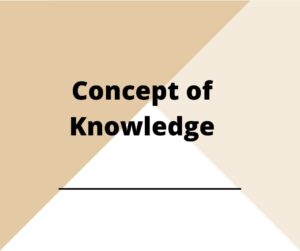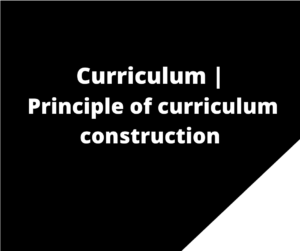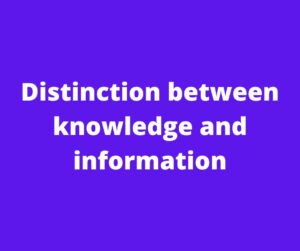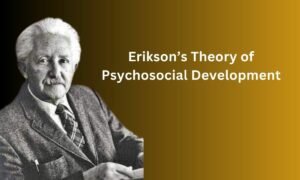Constructivism is a philosophy of learning founded on the premise that by reflecting on our experiences, we construct our own understanding of the world, we live in. Constructivism is an important learning theory that educators used to help their students to learn. Constructivism is based on the idea that people actively construct or make their own knowledge and that reality is determined by our experiences as a learner
Meaning of Constructivism
Constructivism is the idea that learning does not just happen by the traditional methods of teachers standing in front of the class and lecturing. It has been observed that a person learns more when he constructs the knowledge on his own rather than if he listens to the teacher of some other person, For instance, students in a school learn more from conducting research and experiment rather than he listens to the teaching of his teacher.
This kind of learning in which the learner constructs his own knowledge by himself best on his prior knowledge as constructivist learning
Constructivism theory
The theory of constructivism was propounded by Jean Piaget and it consists of three processes namely: assimilation, Accommodation and Organization
Assimilation: Assimilation is a process in which the newly acquired learning has emerged with prior learning. The prior knowledge of the teacher may help in the learning of the new knowledge. E.g for the children in kindergarten, their learning of reading and writing will later help them to read books on newer knowledge
Accommodation: This kind of process in which the old learning may be irrelevant to the new knowledge acquired. In fact, the prior knowledge could be false knowledge and may have to make its way to the new knowledge. Thus, the old learning is discarded for the new knowledge. For instance, in learning, a student who has learned to write in the correct manner
Therefore, constructivism learning is done in a manner in which the learners construct new knowledge based on their prior knowledge. New knowledge gained can either be added to his prior knowledge or lead to its disposal. The new knowledge has to be organized to fit in which the prior knowledge or experiences of the learner.
There are various principles based on which constructivist learning happens. They can be written as follows
- Search for new meaning
- Whole to parts
- Activities
- Interactions
- Prior knowledge
Organization: the process in which the new knowledge that has been gained will be organized into a schema in such a way that it fits into the already organized system for prior knowledge
For instance, in learning the BODMAS rule in mathematics, a child needed to learn that calculations have to be made first within brackets, then division, multiplication, addition, and last subtraction
Educational implication of constructivism
The educational implications of constructivist learning theory are prettified. The teacher can take the help of the following in order to ensure that their children learn to their best ability
- Problem-solving: The teacher can provide the students with problems that they acquired to solve in their own way for eg- How can we stop pollution? The above question can help the teacher understand what the children already know and can be used as a basis for further discussion
- Experiments: The children can learn a lot through apprentice-learning for instance the teacher can instruct the students on how to use a microscope to look at organisms and ask them to identify various slides.
- Guide: The teacher can play the role of guide, facilitator, coach, or tutor. He must let their children learn in their own way
- Activities: Various activities can be organized in the classroom such debated so that children learn from one to another
- Interaction: The teacher should also provide time for students to discuss or interact with one another. At the same time, he should monitor, so that class does not be too missy.
- Group: The teacher should divide the class into groups so that they discuss and do projects together
- Mistakes: Mistakes should be monitored. The prior knowledge of the students could be false, the teacher should encourage his/her children to make sure that discussions or projects are going in the right direction.
- Brain Storming: The teacher can also organize brainstorming sessions so that children give out their ideas. The teacher should organize children’s ideas into a comprehensive system.
- Textbook: The teacher in a constructivist classroom should encourage his/her children to the best possible use of interaction, discussion, and experiments.
- Field trips: A trip in which the children can learn through exploration and observation should be made by the whole class. The teacher can make sure that the students are recorded their observations.
- Organization: The teacher can always make sure that knowledge is dished out by the students not unless organized into systematic knowledge.
- Assessment: Proper assessment of children on knowledge can be done through tests, quizzes, and so on
Conclusion
we can conclude from the above points, that we came to know that constructivist learning is done in such a manner in which the learners construct new knowledge based on their prior knowledge or lead to its disposal. The new knowledge has to be organized to fit with the prior knowledge or experience of the learner.



